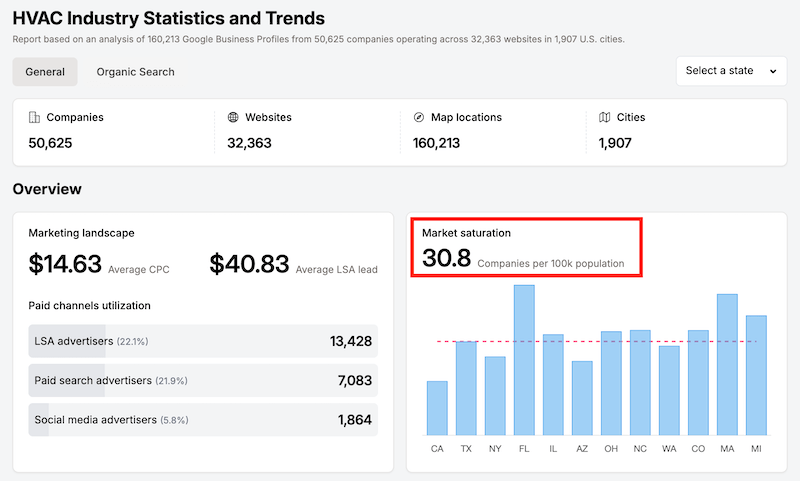Market saturation
What is a Market Saturation?
Market Saturation – A metric indicating the level of competition in the home service industry, measured by the number of businesses relative to customer demand in a specific area. High market saturation suggests limited growth opportunities due to an oversupply of service providers.
Market saturation occurs when the availability of home service providers in a given area meets or exceeds customer demand, creating intense competition and making it difficult for new businesses to establish themselves. This oversupply can lead to price reductions, shrinking profit margins, and higher customer acquisition costs as businesses compete for the same clientele.
For home service providers—including plumbing, landscaping, cleaning, HVAC, and electrical services—market saturation means that customers have many options, forcing businesses to stand out through competitive pricing, superior service quality, and unique value propositions to maintain profitability and growth.
How to measure market saturation?
Measuring market saturation in the home service industry involves analyzing several key factors to determine the level of competition and demand in a given area. Here are some methods to assess market saturation:
- Competitive Density – Research how many home service businesses operate in the target area. A high number of competitors relative to the population size indicates a saturated market.
- Customer Demand vs. Supply – Compare the number of potential customers (households, businesses, or property owners needing services) against the number of service providers. If demand is low but competition is high, the market is likely saturated.
Home Service Base allows you to check business saturation across various home service industries. Simply open an industry report, select a state, and choose your city to see the market saturation per 100,000 population in your industry and area.

You can check market saturation in your area across these industries:
- HVAC
- Plumbing
- Flooring
- Handyman services
- Home inspection
- House cleaning
- Lawn care
- Junk removal
- Gutter cleaning
- Carpet cleaning
- Pest control
- Bathroom remodeling
- Water damage restoration
- Landscaping
- Pool cleaning
- Painting
- Electrical
- Garage doors
- Fencing
- Drywall
- Window cleaning
- Moving
- Pressure washing
- Tree service
- Roofing
- Kitchen remodeling